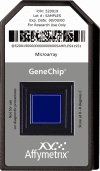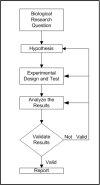Clustering of High Throughput Gene Expression Data
- PMID: 23144527
- PMCID: PMC3491664
- DOI: 10.1016/j.cor.2012.03.008
Clustering of High Throughput Gene Expression Data
Abstract
High throughput biological data need to be processed, analyzed, and interpreted to address problems in life sciences. Bioinformatics, computational biology, and systems biology deal with biological problems using computational methods. Clustering is one of the methods used to gain insight into biological processes, particularly at the genomics level. Clearly, clustering can be used in many areas of biological data analysis. However, this paper presents a review of the current clustering algorithms designed especially for analyzing gene expression data. It is also intended to introduce one of the main problems in bioinformatics - clustering gene expression data - to the operations research community.
Figures









References
-
- Adamcsek B, Palla G, Farkas IJ, Derényi I, Vicsek T. Cfinder: locating cliques and overlapping modules in biological networks. Bioinformatics. 2006;22(8):1021–1023. - PubMed
-
- Agarwal G, Kempe D. Modularity-maximizing graph communities via mathematical programming. The European Physical Journal. 2008;B 66:409–418.
-
- Alderson DL. Catching the networkscience bug: insight and opportunity for the operations researcher. Operations Research. 2008;56(5):1047–1065.
-
- Allison DB, Page GP, Beasley TM, Edwards JW. DNA Microarrays and Related Genomics Techniques: Design, Analysis, and Interpretation of Experiments (Biostatistics) Chapman and Hall/CRC. 2005
-
- Alshalalfah M, Alhajj R. Cancer class prediction: two stage clustering approach to identify informative genes. Intelligent Data Analysis. 2009;13(4):671–686.
Grants and funding
LinkOut - more resources
Full Text Sources
